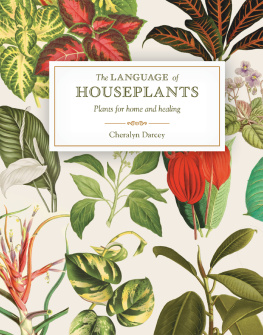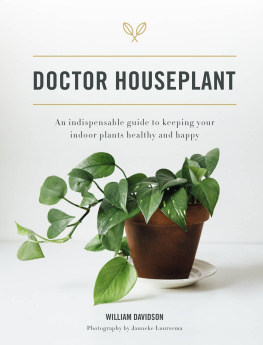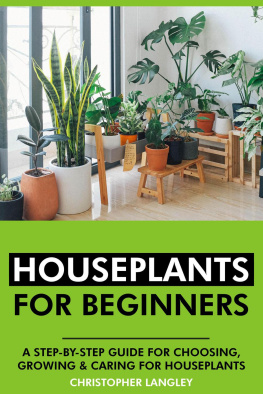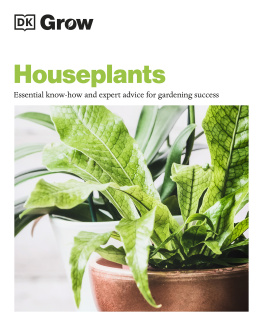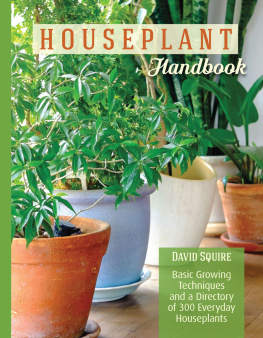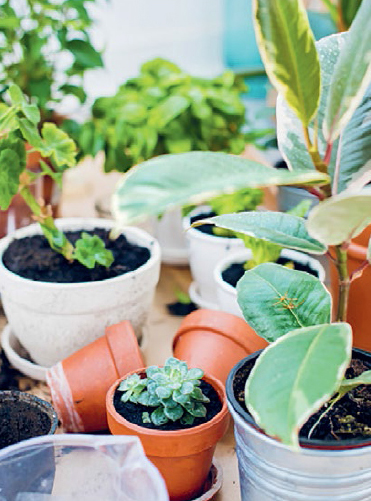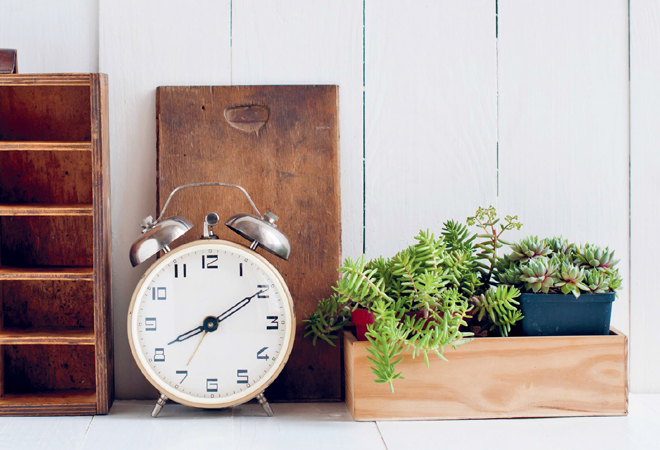INTRODUCTION
Its easy to fall in love with houseplants and the quiet joy their presence can bring. Theyre beautiful companions, certainly, but they also quite literally add more life to your space, making your home feel more like your own, whether youre in a small rented apartment where you cant paint the walls, or in a sprawling house. Houseplants can provide a form of reprieve and respite from the stress of everyday life and can improve your indoor air quality, your mood, and even your health. Fortunately, theres no one-size-fits-all approach to keeping houseplants. You can dote on them as you would with a favorite pet; focus more on their aesthetics, using them to enhance any kind of interior design; or look at them as a way of bringing the outdoors inside.
Whats more, houseplants dont need to be a challenge. Really, anyone can be a good friend to a houseplant, if provided with the right information. The first thing you have to put out of your head, even if youve had bad luck before, is that theres such a thing as a black thumb. Its normal, however, that some questions should arise. How do I choose a plant? How much light does my plant need? How often do I have to water it? What happens if I forget? Is fertilizer necessary, and how often should I use it? How can I tell when I need to repot my plant? What kind of soil should I use? Why are the leaves turning brown, and where did these bugs come from? If youve ever wondered about the answer to any of these questions, youve come to the right place. Even if you dont know what questions to ask and feel like youre doomed to kill every plant that crosses your doorstep, this book will take you step by step through the basics, teaching you how to care forand love!your houseplants.
Like many people, I struggled with keeping plants alive and thriving for a long time. Id go to the store, find a plant (okay, more like five plants) that I liked, and come home with these new friends. The plants would look greatfor a while. Without fail, a few months later Id have some casualties. What was I doing wrong? I decided to look into the matter more seriously and earnestly than I had before, to teach myself about plants.
The most important thing I discovered along the way seems obvious, but it might not be to everyone (it wasnt to me!): learn about each plant youre interested in and how it might work in your home. In the following pages, youll learn how to assess your home and the environment it offers, so you can select your plants accordingly. And if youve got your heart set on a plant that might not work in your space, youll go in knowing that, so you can limit your disappointment if it fails to thrive. (But who knows, a little passion can go a long way toward success.)
Youll also learn the benefits of spending a little time with your plants on a regular basis, which will help you understand their needs a bit more. This simple, mindful practice will teach you more about plants than you could ever imagineyoull become an expert on how to take care of your plants in the unique microclimate called your home. Youll discover, for example, that not all of your plants will need water at the same time. Youll find diseases and pests early on and be able to treat them more successfully. Youll breathe on your plants too, exhaling the carbon dioxide that they need. As a bonus, you may find that stopping by to visit your plants can be a way of checking in with yourself and stepping away from technological distractions. When (not if) you succeed, and a plant starts to get new leaves or begins to flower, youll get an incomparable rush of accomplishment that will have you beaming with pride and wanting more.
The basics of plant care are easy to learn.
If youve picked up this book, youre already one step closer to that moment. In the following pages, youll learn the basics of plant care and find profiles for fifty well-loved, time-tested houseplants, including some new favorites. My hope is that the foundational information offered here will give you the tools and confidence you need to cultivate your own plant collectionto help you learn how to houseplant!
Part One
PLANT CARE BASICS
THE PATH TO ENLIGHTENMENT
Understanding Light
When it comes to plants, most of us have never given the light in our home a second thought, but the type of light that your home receives is perhaps the most important factor to consider when choosing your houseplants. After all, you can adjust your watering habits or humidity levels, but its hard to build a south-facing window if you dont already have one. Give yourself some time to understand the light in your home and how your plants respond to it. You may have your heart set on a fiddle-leaf fig (), but if you cant provide it with bright light, youve set yourself up for an expensive disappointment.
Before you select plants for your home, lets look at why they need light. Light is food for plants. It allows them to undergo photosynthesis, a process during which the plant synthesizes its own food using light (photo comes from the Greek root phos, meaning light), water, and carbon dioxide in the air. These components are converted to glucose (sugar), and the plant releases the oxygen from the water molecule into the air.


